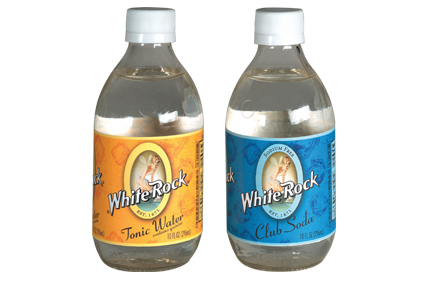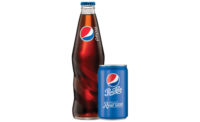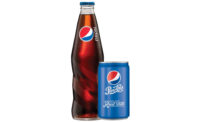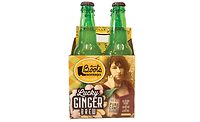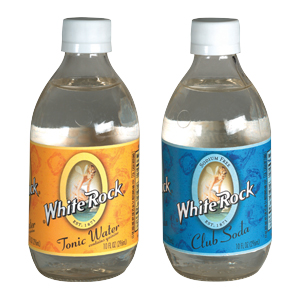
|
Around the 1900s, the White Rock brand was almost synonymous with “water,” says Larry Bodkin, president of Whitestone, N.Y.-based White Rock Beverages. It was even larger than Coca-Cola and Pepsi at the time, he claims. In fact, White Rock water was used instead of church-supplied holy water at Gloria Vanderbilt’s christening; White Rock was featured at the coronation of England’s King Edward VII; and Charles Lindbergh launched his historic flight from New York to Paris by smashing a bottle of White Rock sparkling water over his plane, the company says.
However, the company found itself at a strategic disadvantage when The Coca-Cola Co. and PepsiCo began opening local bottlers around the country, while White Rock Beverages continued to source all of its water from one spring. It was this water source that first made the brand popular.
According to legend, water from the White Rock natural spring in Waukesha, Wis., had medicinal value. In 1871, a pharmacist named H.M. Colver purchased the spring and turned it into a vacation and health destination. Within four years, he was bottling the spring’s water and distributing it throughout the country.
By the 1890s, White Rock had established itself as an upscale line of sparkling waters and mixers. The company began selling its products across the United States, Europe and other parts of the world. White Rock Beverages went public in 1924, and in 1944, it was acquired by international beverage marketer National Distillers.
“In the 1940s, National Distillers … was looking to acquire regional beverage companies and combine them into a national entity to compete with Coke and Pepsi,” Bodkin explains. “So they bought White Rock in the Midwest and they bought Morgan [Beverages] in New York and they combined them both as White Rock.”
With a location primed for market growth, Morgan Beverages was a producer of flavored soft drinks. Bodkin’s grandfather, Alfred Morgan, became president of the new White Rock Beverages company, and eight years later, purchased the company.
Since then, White Rock has evolved in niche markets by focusing its attention on unique flavors and healthy products. The company recently introduced a Prickly Pear-flavored soft drink under its Sioux City brand, a premium, western-themed line of soft drinks made with pure cane sugar.
A few years ago, it purchased the rights to the Olde Brooklyn line of carbonated beverages, which feature a variety of flavors, each derived from a famous Brooklyn neighborhood, such as Coney Island Cream Soda and Red Hook Raspberry. And, of course, the company still sells its flagship White Rock waters, mixers, seltzers and soft drinks.
“We find that people, as they’re aging, they’re drinking less beer and more mixed drinks,” Bodkin says. “That’s where we’ve been able to pick up nice growth in recent years.”
Plus, the company continues to sell large amounts of seltzer beverages, he adds.
“One area of White Rock which hasn’t grown, which is almost by design, are the flavors. Things like Cream Soda, Black Cherry — we’re selling less and less of that stuff each year,” he says. “People are drinking less highly carbonated, highly sweetened soft drinks, but when they do drink [soft drinks], they’re drinking more upscale, specialized products.”
White Rock Beverages’ Sioux City and Olde Brooklyn brands are both positioned as upscale and gourmet, and they contain pure cane sugar. The company’s White Rock and Olde Brooklyn brands are OU Kosher-certified. This move away from sugary soft drinks and toward healthful beverages has led White Rock Beverages to continuous growth after 140 years. From 2004-2010, the company experienced 75 percent sales growth, Bodkin says. In the first five months of 2011, the company already is up 9.1 percent, he says. Bodkin attributes the company’s success to brand equity, nostalgia and quality.
“[White Rock is] a strong brand,” Bodkin says. “People have good memories of it.”
Plus, the company has kept the same quality formulations at all costs. Bodkin, who has been president since 2002, realized a few years ago that somewhere along the way, the formulation for White Rock Ginger Ale had been changed to save money.
“Ginger Ale is … a core flavor for us, so once we found that out, it wasn’t something that we could live with,” Bodkin says. After multiple tests, the company reformulated White Rock Ginger Ale with higher quality ingredients, reconstructing the brand’s original formulation. After the reformulation, the product received good reviews from consumers correlating with positive sales growth, he says.
In this case, the company reformulated one of its varieties to maintain brand quality and value, “but for the most part, we try not to mess with something that’s working,” Bodkin says. With a plan to continue forward in the healthy beverage sector, after 140 years, White Rock Beverages hopes there’s another 140 and more to come, he says. BI
